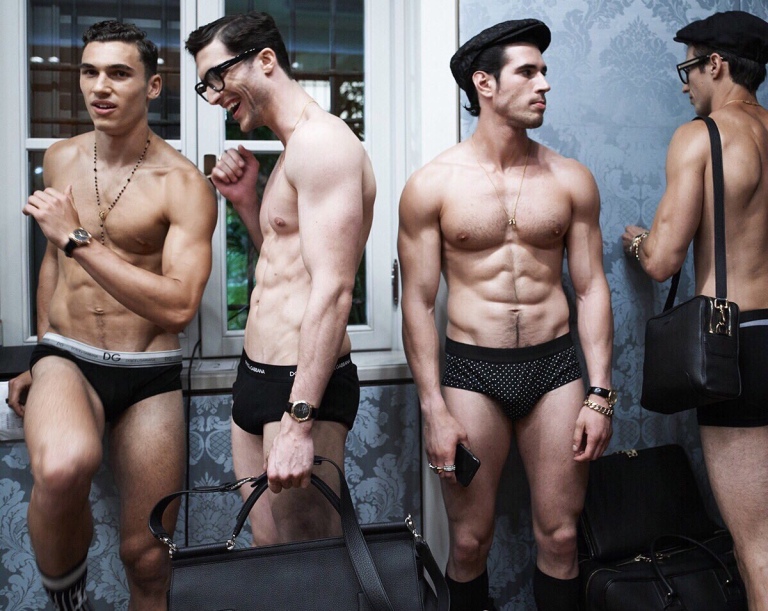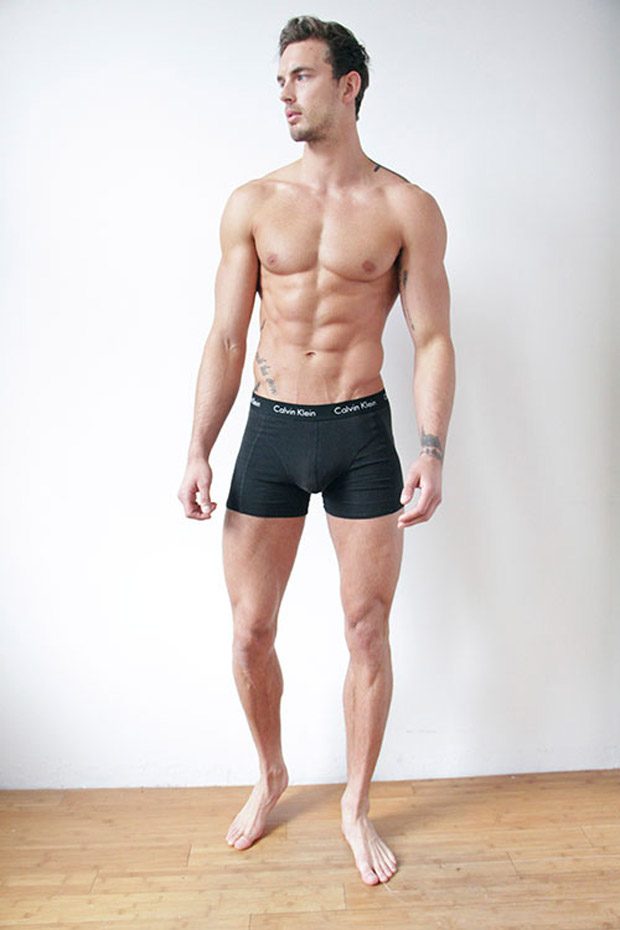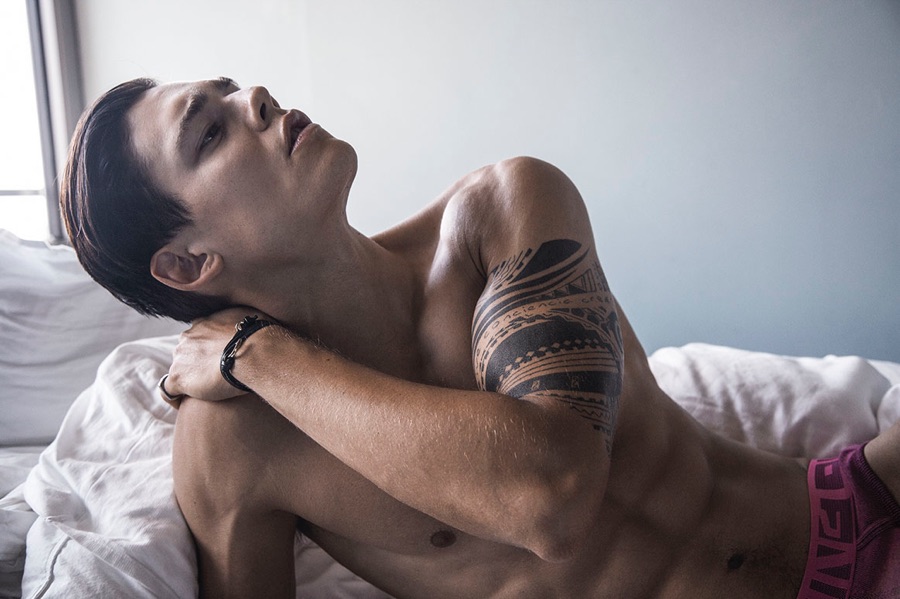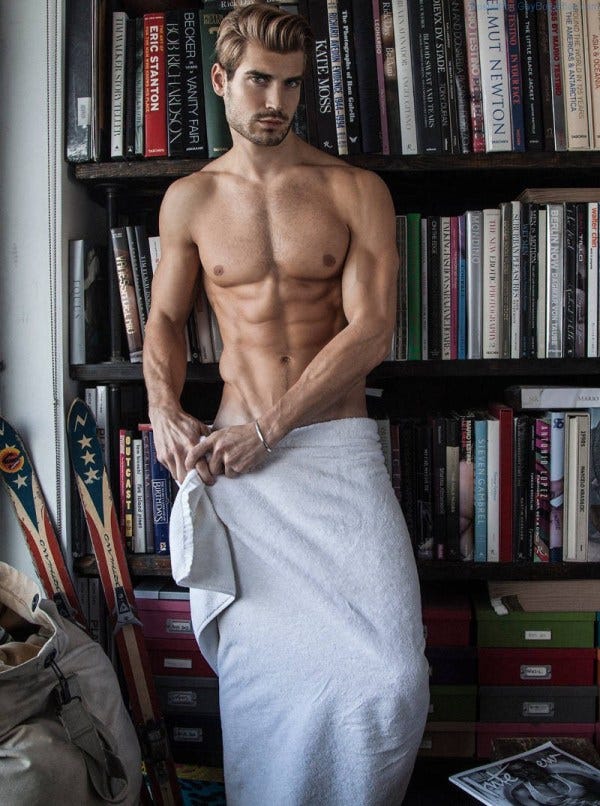
Sexual Advances, Quid-Pro-Quo Offers & Unwanted Fondling: Inside the Dark Underbelly of Male Modeling
The Male Model Speak Out Exclusively for Uvenio:
When Terry Richardson’s studio behavior sparked a fashion-world conversation about the sexual harassment of female models last year, no one discussed how their male counterparts are getting manhandled regularly…but can’t boys fend for themselves?
New York Fashion Week is when editors, buyers, and other honchos on the male side of the fashion world—most of them gay men who all seemed to know one another, many of them in mid-thigh tailored shorts and sockless oxfords—will mill through a series of rooms, lubricated with drinks from a free bar and perusing presentations from various designers. In every room, male models—almost uniformly tall, rail-thin, white, Northern European-looking and twentysomething—stand in formations, nearly immobile, their chisel-cheeked faces impassive. Industry types examine and occasionally approach them, feeling the fabric of their form-fitting garments and sometimes turning back lapels or hems to look at stitching and construction.

Last season, A Male Model distinctly remember a designer who ushered over two other men to look at the details of the pieces being worn by one model. The two men accompanying the designer murmured and nodded their heads appreciatively. Then, as the trio was walking away, the designer gently and briefly caressed the model’s neck. It was a gesture that, whatever its intentions, clearly had nothing to do with stitching or construction.

The moment was fleeting, likely innocent, but it provided a glimpse into an aspect of the industry that is usually only whispered about: sexual advances, let’s-make-a-deal suggestions or downright harassment of male models, usually (though not certifiably always) by gay male photographers, designers, casting agents or other industry poobahs. Last year when the famous fashion photographer Terry Richardson has seen mounting allegations of sexual harassment against him by a string of former female models, culminating in a New York Magazine and a very public discussion about the sexual abuse of female models, the male side of the equation has gone virtually undiscussed.

Yet as I talked the past few weeks with scores of male models, casting agents and other industry insiders—most of whom demanded anonymity—it became clear that various levels of harassment, from inappropriate comments and touching to surprise requests to disrobe and explicit quid-pro-quo offers (accept my come-ons and I’ll advance your career), happen every day to male models, creating a troubling subtextual power dynamic that echoes its counterpart on the female side of the business.
One thing’s clear: Nobody really wants to talk about it—often, least of all, the (still mostly straight) male models themselves, who aren’t comfortable using the same language of sexual harassment that the women’s side of the casting call is only just now acclimating itself to.
“Harassment definitely happens,” says a men’s agent at a top agency, “more so than a lot of the guys like to tell us. A lot of them come back from shoots feeling very uncomfortable but they’re afraid that if they tell us, we’ll have to talk to the client. Then, if it gets back to the culprit, he, depending on his status, could actually destroy that model’s career.”

One afternoon, I stood outside a pre-Fashion Week casting call in downtown Manhattan for a major men’s show and asked dozens of models, many of them as young as 18 and with skateboards in tow, if they’d ever been sexually harassed. (I’d been quietly tipped off to the call by the casting agent, who wants more conversation around this issue.) I told the models they could speak anonymously. Many of them said they’d never experienced it personally but that stories about certain photographers, designers or agents who had a reputation as a “perv” or a “creep”—the same names, a few of them iconic, came up repeatedly—were commonplace, almost urban legends in the modeling world.

There are variations on the story about the revered photographer who flies a bunch of models to an exotic or remote locale and then sends boys home or retains them, reality-show-style, based on their willingness to accommodate his late-night knocks on their hotel-room doors. Or the photographer who makes his models do breathing exercises and touches them simultaneously to get them “in the zone.” There’s the late legendary designer who made all his male models pose before him, one after another, in the same Speedo. There’s the A-list agent who takes new boys into a private room for measurements and tells them they need to drop their pants.

Most of the models I talked to said they’d experienced some form of ambiguous, low-grade harassment. “Guys have spent a lot of time adjusting my briefs, or wanting to adjust my junk when I can do it myself” on underwear shoots, one model told me, echoing many others. Another complained about stylists who “tuck in your shirt just a little too long and deep.” Eli Hall, a jovially cocky 24-year old suit model, and one of the few who talked openly, told me about a photographer who asked him to strip down to his underwear: “I told him, ‘What’s your problem? I’m a suit model.’
“I love getting sexually harassed!” he joked. “If I’m not getting sexually harassed, I’m doing something wrong.” But then, a notch more seriously, he added, “I have a very high tolerance for verbal sexual flirtation from either men or women"—he is straight—"but I draw the line at touching.”
According to many models and behind-the-scenes types, young male models quickly learn that being comfortable, even flirtatious, with gay men, who drive the men’s side of the industry, is key to their career advancement. (In very recent years, the emergence of openly gay male models has slightly changed this dynamic.) “The models who play it best are funny, charming and coy,” says the same top agent. “They’ll flirt with you all day but you’re not getting anything from them but a smile and a goodbye, and the client come away saying, ‘He’s great, he’s amazing.’”

And indeed, it seems that, once in the industry a few years, most male models master this delicate balance with no worse war stories other than the aforementioned tale of a slightly too touchy stylist or an involved underwear adjustment. “Male models tell me that some level of sexual harassment is very common but it’s just par for the course,” says Sarah Ziff, 32, a model and founder of The Model Alliance, a nonprofit that advocates for models’ rights in the absence of any union. “They said it’s mostly a problem for the younger ones, in their late teens and early twenties, before they get more established.”
Most of the models I spoke to told me that minor sexual discomforts didn’t faze them, that they were not as vulnerable as female models (in part because they industry hires them at an older age), and that they were grown men who knew how to draw a line. “It’s up to you, what you project and what you’ll put up with,” a model from Italy said after the Industria shows.
But a few models seemed genuinely shaken by prior experiences. “Someone spent two hours combing my hair once,” one told me. “Just the two of us in a room.” The same model said he’d also had an experience so bad that he couldn’t sleep for a week, but he wouldn’t divulge details, terrified that they’d reveal his culprit.
Some industry folks think that if models are skittish, they’re in the wrong business, or that they should simply set limits. “You have to be able to respect yourself and say ‘Fuck this, I’m out of here,’” says a successful straight male fashion photographer who shoots men and women alike in provocative settings.
But it’s also likely that they underestimate a strong power dynamic. “It’s easy to tell models they don’t have to do anything they’re uncomfortable with,” says Ziff. “But most models start out in debt to an agency for flying them or putting them up. That puts much more pressure on you to go along with inappropriate demands.” Then add to that agencies telling new models they are sending them to important clients who could advance their career. It’s not always easy to say no, especially if models aren’t told in advance that a shoot calls for nudity and they’re suddenly alone with a photographer and his staff.
So what should be done? Many industry folks, some models included, think that any legal or regulatory changes would take the magic out of fashion. “As a photographer, you have to manipulate models into giving you something they’re not giving to anyone else, so into that comes the psychological game of fear, lust, happiness, sadness, comfort discomfort,” says the straight male photographer. “You can’t set rules. I don’t think it’s right to leverage power or take pictures of people while they’re changing, but fashion is a crossover between business and art. If you say everything has to be P.C. and normal and cookie-cutter workplace, the fantasy is gone.”

But Ziff disagrees. “I think you can have an even more daring and safe and fun environment if there are laws on the books and people really know their boundaries,” she says. “It would protect everyone involved.” But there things get tricky: Models are classified as independent contractors—not “real” employees, which federal law protects from sexual harassment. (There is a growing push for the law to extend such protections to independent contractors in all work sectors.) Moreover, most agencies are classified as “management companies” rather than agencies, which technically exempts them from having to put the interest of the models first.
The Model Alliance is working with U.S. Congresswoman Grace Meng (D-NY) to advance legal fixes for these realities. “Just because someone works in an industry that relies on independent contractors doesn’t mean that they shouldn’t have legal protection from sexual harassment,” Meng told Salon.
Meanwhile, most industry insiders admit that the power to stop harassers—especially ones who can make or break careers—is highly limited. The agent at the top agency relates a recent tale of sending a new male model out to a shoot for “a big designer.” Says the agent: “The designer started asking him questions about his dating life and then invited him back to his apartment. The model declined and came back and told us about it. So we reached out to the contact for the designer and told them. They said, ‘Oh, um, ok.’ But are they going to go chastise their boss? Harassment is about power, and in fashion, it’s the bigwigs who have the power.”


















No comments:
Post a Comment